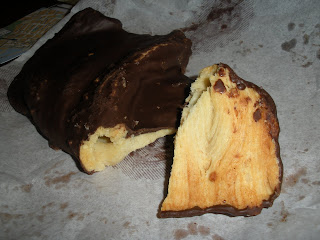Basque Country is a region spanning the France/Spain border that has a culture, language, and food tradition all its own. It is considered by many to be the “culinary capital” of Spain, and we were told along the way that tapas originated in San Sebastian, a city we visited and ate in, and that the tapas there are unlike any you will find elsewhere in Spain. Much of the wealth of this area was due to the maritime prowess of its people, so the cuisine is heavily oriented toward seafood. But they are also known for some specific pastry – gateaux basques – as well as chocolates. We had some of all, naturally!
The upside of tapas – called pintxos (prounounced peen-choss) – besides how delicious they are!! – is that you can try so many different types without getting too stuffed. The downside for a blog is that there is so much to describe! So, I will use the caption of each photo for extra detail.
The upside of tapas – called pintxos (prounounced peen-choss) – besides how delicious they are!! – is that you can try so many different types without getting too stuffed. The downside for a blog is that there is so much to describe! So, I will use the caption of each photo for extra detail.
 |
| Chorizo sausage, tortilla (potato omlette), marinated artichoke heart with olives, puff pastry with crab topping, crostini with blue cheese and walnuts. |
 |
| Crostini with onion jam and a round of grilled soft cheese. |
Besides seafood, the cuisine uses a lot of peppers – both red and green – but we didn’t have anything that we considered spicy, and the food is not known to be spicy, as well-seasoned as it is. Onions, garlic, and tomatoes also figure heavily into the dishes, along with all types of seafood: mussels, white fishes of all types including a lot of cod (bacalao, sometimes salt cod), mussels, shrimp, clams, octopus, squid, crab, and on and on to things I can’t even hope to identify.
 |
| Live, squiggly snails in a mesh sack at the market. |
 |
| It's hard to tell from this photo how absoltuely enormous the bell peppers were -many were well over 10" long. |
The chocolates – filled, and truffles, were all very good. The pastries were of a more dense texture, sort of a cross between a pate brisee and a cookie. The Gateau Basque is the consistence of a cookie, but more the texture of a shortbread pie crust. Sometimes it has a soft “cream” filling, otherwise it is filled with cherry jam. We preferred the jam versions because the “cream” filling while softer than the baked exterior, is still mostly the same taste and texture both inside and outside. This was the same for the house specialty “Pastel Vasco” we tried from a local bakery… it was shaped like a tart, but had a soft pie-crust texture with a dense, buttery filling. All of the ones we tried were very good, but they aren’t what I will go back for. They are sweetened, but aren’t too sweet, yet otherwise don’t have much flavor profile. I think the finesse is in the texture, which is too soft to be a cookie, but too firm and crispy to be cake. It’s difficult to describe, so if you have a chance to try one, I highly recommend you do!
 |
| This was a pastry kind of like a palmier - a crunchy croissant, not too sweet, but completely covered in chocolate. |
 |
| Detail of pastry above. |
 |
| Chocolate mousse cake. |
 |
| Basque cream-filled tart... the center is pretty much the same flavor as the exteriorb but a slightly softer texture.I wasn't crazy about it, but it was interesting to try. |
 |
| This was literally a chocolate truffel on a cookie. What a fantastic idea!! |
 |
| Not sure that these jellies are a particular Basque specialty, but they were incredibly delicious - with actual fruit flavor and so very cute. |
Pintxos are the way to go in Spainish Basque, but in France, the specialty is Ttoro – a seafood stew. It has some similarities with bouillibase, but a richer, stewier broth. The one we had was loaded with shrimp, prawns, white fish, and mussels, along with red peppers and tomatoes.
 |
| This seafood stew with shrimp, prawns, and crawfish-like guys, along with lots of white fish filet, mussels, potatoes, and red peppers is a specialty in Saint Jean-de-Luz. |
 |
| Grilled sardines with salade. If you approach cafefully, the bones pull out pretty easily in one complete skeleton, and these little guys are really tasty, especially with all the herbs. |
 |
| Had to include this shot of the "leftovers" from our Basque seafood stew... |
There were some other local specialties that we did not get to try, such as piperade (peppers, tomatoes, garlic, ham, and eggs), axoa (veal or lamb stew on mashed potatoes), the herbal liquor izarra, and txakoli sparkling wine. We did have some local white wine, cidre, and sangria though to wash down all the other treats. We didn’t so much as run out of time, but run out of stretch in our pants!
Go to Basque Country – either the French side or the Spanish side, but better yet, BOTH – and go hungry, then try as many different items as you can. Things that you don’t think look good or that you don’t think you like will taste amazingly delicious because they are so fresh, and so unique, and prepared following generations of tradition.




No comments:
Post a Comment